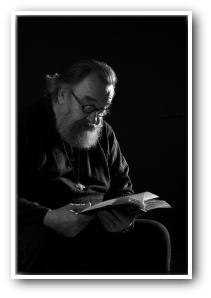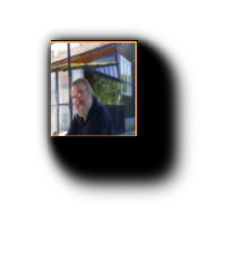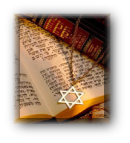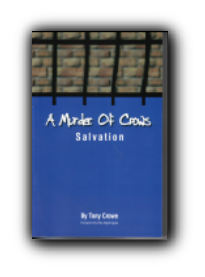


Brother Ray


Jesus was A Jew ?

The Tallit
A Murder of Crows Salvation Download the first chapter by clicking on here
Brother Ray has continued to expand his earlier look at Scriptural "genealogies". We have regrouped them in sequence. As he says, it is an ongoing study, a work inj progress. If you haven't look at the "genealogy" article lately, there is more there now. It's good stuff.
NOTES ON THE TALLIT
by Brother Ray
In Yeshua's day, there were two different "Tallits" one of cotton for better weather and one of winter and cooler periods. more than just a religious raiment, they were regular clothes with signature attachments,much like a bikers jacket with various patches and identifying items. With each Tallit, there are 613 fringes, (tzitzit) one for each of the 613 dos and doníts in Leviticus (there are more doníts and dos). Hebrew tradition, which places great interest in numbers, also notes that 613 is the total of 360 (days in the Hebrew year) and 253 (the number of bones in the human body created by the Lord). Non believing Hebrews still wear their Tallit or prayer shawls to this day which you can see daily at the Wailing Wall in Jerusalem. In Messianic synagogues (Hebrews who believe in Yeshua), Tallits are often provided for believers at the door for those who don't have them. For prayer, Hebrews would pull the tallit over their heads to shut out the world when they were talking with God or praying or entering God's protective tent. As an aside, in the Middle East when you were in somebody's tent you were protected and safe as long as you stayed. When and if you left you were again on your own. The same is true of the Tallit or tent provided by The Word and faith in Yeshua.....The corners are called the wings, mentioned in scripture is Godís wings, and His protection. In the time of Yeshua and Sa'ul, rabbinical student (it wasn't free) often earned their room and board, fees and spending money by making Tallits or tents. Tallits had to be carefully made, attention given to the right colours, counting the 613 fringes etc. You did not go down to the store and buy a Tallit. It was under rabbinical supervision and control, even in the synagogues in the diaspora (all over the world). Sa'ul (Paul) was said to be a "tent maker". It is very plausible that as he ministered to the heathens, the "goyim", he (a) always went to the synagogue first and (b) earned his own way by working - and that his occupation as tent maker can mean he MADE TALLITS. Remember that Yeshua and his apostles, his disciples, his emissaries were all Torah observant. They had the same respect for and knowledge of the Tallit as before. Whereas Yeshua came not to change the Torah but to full fill it (see Matthew 5:17), the Tallit remains today as before (there is only one Lord,one Word, one teaching to follow, one tent or Tallit each of us should seek. Like the Tallit, following Yeshua is an everyday affair. Now we have a Tallit covering our hearts (Jeremiah 31:31).
The 613 Torah teachings enumerated in Leviticus and represented in the Tallit were summarized in 11 commands (or "mitzvot") by King David in the Psalm 15 (read it) and then two, merely two by Lord Yeshua, Deuteronomy 6:14 (the shema) and Leviticus 17:18.(Also see the unity of the Lord and Torah in John 17.
All Hebrew words contain either two or three base or root letters. The letters today are the 7th generation of the very first Hebrew Yahweh used in giving the Torah to Moshe Avinu. The first human words Yahweh used were not letters as we know them but pictures or pictographs (much life the hieroglyphics seen on the walls of Egyptian pyramids or even on the famous Code of Hammurabi. The pictures are very real concepts easily understood by our early Hebrew brothers and sisters.
The three root word/pictures in Tallit are "t", "l" and "t".. Early Hebrews would have read this the TAV, WAV, LAMED and TAV. The four pictographs are (1) a tree, (2) a tent peg, (3) a shepherd's staff or crook and (4) a tree. In our language today, and for believers, the tree is a symbol of cross, the tent peg ties the believer to God's tent, the shepherds crook is the Good Shepherd coming to get us and the tree or cross is what gives him that right.
So dear brothers and sisters, the Tallit is not only a symbol. Its meaning is alive and breathing. The very root pictures of the Tallit tells us of the gospel story. Those three Hebrew pictographs that spell Tallit were not chosen at random or by accident for as the rabbis of old have told us there are no accidents or coincidences in God's word.
(Is it a coincidence Brother Tony and Sister Rita have chosen the idea and name of their work TALLIT? We think not. Rather, we think the choice was foreordained in the spirit and communicates God's approval and blessing of their direction and work.)
(As always, remember ACTS 17:11, which says don't take anything from Brother Ray - or anybody else ) as true or worthy without verifying it in scripture. If something is not scripturally sound, dump it forthwith.)
******
While on the matter of the 22 original pictures of pictographs in the Hebrew language, consider this:
When Yahweh gave Torah to Moshe Avinu, pictographs were still in use.
When the complete Book of Isaiah was rediscovered in the Dead Sea Scrolls in 1948 (the same year Israel became a nation again) the book of Isaiah was still using at least some pictographs (as late as 700 BC).
When God changes somebody's name, He often is changing the root Hebrew pictographs from one thing to another. When God changed Avrams name to AvraHam and Sarai to SaraH, the picture God added was the Hey. The picture for Hey was a man (or woman) raising his or her hands to God (to the Creator), indicating communication, trust,faith, obedience and union. Yahweh was welcoming Avram and Sarai and promising His blessings upon them.
The same is true with God changing Saul to Paul. Both include the "L" or lamed or shepherd's crook. Both include the wav or tent peg. What changes is a shift from the P (or Ph) picture to the SH picture. Paul's old name meant being called to the tent by "man's two front teeth" whereas his new name meant being called to the tent by an open mouth. What does manís two front teeth imply? From man or tradition. What does an open mouth indicate to the believer The Gospel message which is both from God and open to all. Was Paul's name change accidental or without purpose? Not in any way.
One could go on and on with name changes,or the root meanings of the words or names or places God has given us in The Word. It is worthy of a lifetime of study and then as the words in Amazing Grace tell us we will only have just begun.
*********
The 22 pictures or pictographs (easily found on the internet by "Googling" HEBREW PICTOGRAPHS). Look for it. Find it. Download it. Print it. Fold it inside your bible.
The 22 pictures/pictographs begin with ALEPH meaning the head man, the father, the creator. It ends with the TAV, the tree and for the believer the cross. The 20 between give us the way, the truth and life. The 22 pictures are the gospel message.
********
As we know, all languages point TO JERUSALEM, where God will live. Hebrew comes from east of Jerusalem so is written from right to left (from righteousness to the unrighteous?). English and European languages are written from left to right (from unrighteousness to righteousness). Chinese is written top down, from north to south. Pointing to Jerusalem. The original Chinese language was, like Hebrew, written in pictures (and indeed even today Chinese letters really are pictures). The original Chinese languages has an even bigger surprise for us: they tell the story of the great flood. Again, an accident? We don't think so.
*******
Another dimension of the original pictures - they are ALL pictures that directly relate to the senses of sight, touch, feel, smell etc. Whereas Greek is a much more abstract language pointing to ideas and concepts.(Which is exactly why we must be very, very wary of the Greek ideas particularly when it defines "law" from the Hebrew "teachings." One can easily detect a scripture true to the Hebrew origins, i.e., the Lord maketh me to lie down in green pastures, or conversely is more abstract or Grecianized, i.e., the first verses of John. It is of more than unusual interest that only in the last decades have we found copies of the Gospel of Matthew WRITTEN IN HEBREW, NOT GREEK. Matthew's Hebrew name was Levi Ben Helfi (many people in those times had a Hebrew name, a Roman name, a Greek name, sometimes all three) Mark we know in his Roman name, but he was Hebrew. Luke is known by his Greek name but that does not mean he was not a Hebrew.
*******
When Yeshua arose in His tomb, His head covering, or "Tallit" was taken off and carefully folded separately from his other burial clothes - a manifestation that He now longer needed an earthly tent or covering and was indeed risen and inside "Yahweh's" "tent and sitting at the Father's side, a position He had earned at the cross.
Hebrew tradition has it when the prophet Isaiah was martyred by being place in a tree and then the tree sawed into pieces while he was still alive, it was only discovered where he was when the tree was sawed into pieces and the fringes (tzitzit) of his Tallit came into view at the end of one of the pieces of the cut up log.
by Brother Ray
In Yeshua's day, there were two different "Tallits" one of cotton for better weather and one of winter and cooler periods. more than just a religious raiment, they were regular clothes with signature attachments,much like a bikers jacket with various patches and identifying items. With each Tallit, there are 613 fringes, (tzitzit) one for each of the 613 dos and doníts in Leviticus (there are more doníts and dos). Hebrew tradition, which places great interest in numbers, also notes that 613 is the total of 360 (days in the Hebrew year) and 253 (the number of bones in the human body created by the Lord). Non believing Hebrews still wear their Tallit or prayer shawls to this day which you can see daily at the Wailing Wall in Jerusalem. In Messianic synagogues (Hebrews who believe in Yeshua), Tallits are often provided for believers at the door for those who don't have them. For prayer, Hebrews would pull the tallit over their heads to shut out the world when they were talking with God or praying or entering God's protective tent. As an aside, in the Middle East when you were in somebody's tent you were protected and safe as long as you stayed. When and if you left you were again on your own. The same is true of the Tallit or tent provided by The Word and faith in Yeshua.....The corners are called the wings, mentioned in scripture is Godís wings, and His protection. In the time of Yeshua and Sa'ul, rabbinical student (it wasn't free) often earned their room and board, fees and spending money by making Tallits or tents. Tallits had to be carefully made, attention given to the right colours, counting the 613 fringes etc. You did not go down to the store and buy a Tallit. It was under rabbinical supervision and control, even in the synagogues in the diaspora (all over the world). Sa'ul (Paul) was said to be a "tent maker". It is very plausible that as he ministered to the heathens, the "goyim", he (a) always went to the synagogue first and (b) earned his own way by working - and that his occupation as tent maker can mean he MADE TALLITS. Remember that Yeshua and his apostles, his disciples, his emissaries were all Torah observant. They had the same respect for and knowledge of the Tallit as before. Whereas Yeshua came not to change the Torah but to full fill it (see Matthew 5:17), the Tallit remains today as before (there is only one Lord,one Word, one teaching to follow, one tent or Tallit each of us should seek. Like the Tallit, following Yeshua is an everyday affair. Now we have a Tallit covering our hearts (Jeremiah 31:31).
The 613 Torah teachings enumerated in Leviticus and represented in the Tallit were summarized in 11 commands (or "mitzvot") by King David in the Psalm 15 (read it) and then two, merely two by Lord Yeshua, Deuteronomy 6:14 (the shema) and Leviticus 17:18.(Also see the unity of the Lord and Torah in John 17.
All Hebrew words contain either two or three base or root letters. The letters today are the 7th generation of the very first Hebrew Yahweh used in giving the Torah to Moshe Avinu. The first human words Yahweh used were not letters as we know them but pictures or pictographs (much life the hieroglyphics seen on the walls of Egyptian pyramids or even on the famous Code of Hammurabi. The pictures are very real concepts easily understood by our early Hebrew brothers and sisters.
The three root word/pictures in Tallit are "t", "l" and "t".. Early Hebrews would have read this the TAV, WAV, LAMED and TAV. The four pictographs are (1) a tree, (2) a tent peg, (3) a shepherd's staff or crook and (4) a tree. In our language today, and for believers, the tree is a symbol of cross, the tent peg ties the believer to God's tent, the shepherds crook is the Good Shepherd coming to get us and the tree or cross is what gives him that right.
So dear brothers and sisters, the Tallit is not only a symbol. Its meaning is alive and breathing. The very root pictures of the Tallit tells us of the gospel story. Those three Hebrew pictographs that spell Tallit were not chosen at random or by accident for as the rabbis of old have told us there are no accidents or coincidences in God's word.
(Is it a coincidence Brother Tony and Sister Rita have chosen the idea and name of their work TALLIT? We think not. Rather, we think the choice was foreordained in the spirit and communicates God's approval and blessing of their direction and work.)
(As always, remember ACTS 17:11, which says don't take anything from Brother Ray - or anybody else ) as true or worthy without verifying it in scripture. If something is not scripturally sound, dump it forthwith.)
******
While on the matter of the 22 original pictures of pictographs in the Hebrew language, consider this:
When Yahweh gave Torah to Moshe Avinu, pictographs were still in use.
When the complete Book of Isaiah was rediscovered in the Dead Sea Scrolls in 1948 (the same year Israel became a nation again) the book of Isaiah was still using at least some pictographs (as late as 700 BC).
When God changes somebody's name, He often is changing the root Hebrew pictographs from one thing to another. When God changed Avrams name to AvraHam and Sarai to SaraH, the picture God added was the Hey. The picture for Hey was a man (or woman) raising his or her hands to God (to the Creator), indicating communication, trust,faith, obedience and union. Yahweh was welcoming Avram and Sarai and promising His blessings upon them.
The same is true with God changing Saul to Paul. Both include the "L" or lamed or shepherd's crook. Both include the wav or tent peg. What changes is a shift from the P (or Ph) picture to the SH picture. Paul's old name meant being called to the tent by "man's two front teeth" whereas his new name meant being called to the tent by an open mouth. What does manís two front teeth imply? From man or tradition. What does an open mouth indicate to the believer The Gospel message which is both from God and open to all. Was Paul's name change accidental or without purpose? Not in any way.
One could go on and on with name changes,or the root meanings of the words or names or places God has given us in The Word. It is worthy of a lifetime of study and then as the words in Amazing Grace tell us we will only have just begun.
*********
The 22 pictures or pictographs (easily found on the internet by "Googling" HEBREW PICTOGRAPHS). Look for it. Find it. Download it. Print it. Fold it inside your bible.
The 22 pictures/pictographs begin with ALEPH meaning the head man, the father, the creator. It ends with the TAV, the tree and for the believer the cross. The 20 between give us the way, the truth and life. The 22 pictures are the gospel message.
********
As we know, all languages point TO JERUSALEM, where God will live. Hebrew comes from east of Jerusalem so is written from right to left (from righteousness to the unrighteous?). English and European languages are written from left to right (from unrighteousness to righteousness). Chinese is written top down, from north to south. Pointing to Jerusalem. The original Chinese language was, like Hebrew, written in pictures (and indeed even today Chinese letters really are pictures). The original Chinese languages has an even bigger surprise for us: they tell the story of the great flood. Again, an accident? We don't think so.
*******
Another dimension of the original pictures - they are ALL pictures that directly relate to the senses of sight, touch, feel, smell etc. Whereas Greek is a much more abstract language pointing to ideas and concepts.(Which is exactly why we must be very, very wary of the Greek ideas particularly when it defines "law" from the Hebrew "teachings." One can easily detect a scripture true to the Hebrew origins, i.e., the Lord maketh me to lie down in green pastures, or conversely is more abstract or Grecianized, i.e., the first verses of John. It is of more than unusual interest that only in the last decades have we found copies of the Gospel of Matthew WRITTEN IN HEBREW, NOT GREEK. Matthew's Hebrew name was Levi Ben Helfi (many people in those times had a Hebrew name, a Roman name, a Greek name, sometimes all three) Mark we know in his Roman name, but he was Hebrew. Luke is known by his Greek name but that does not mean he was not a Hebrew.
*******
When Yeshua arose in His tomb, His head covering, or "Tallit" was taken off and carefully folded separately from his other burial clothes - a manifestation that He now longer needed an earthly tent or covering and was indeed risen and inside "Yahweh's" "tent and sitting at the Father's side, a position He had earned at the cross.
Hebrew tradition has it when the prophet Isaiah was martyred by being place in a tree and then the tree sawed into pieces while he was still alive, it was only discovered where he was when the tree was sawed into pieces and the fringes (tzitzit) of his Tallit came into view at the end of one of the pieces of the cut up log.
